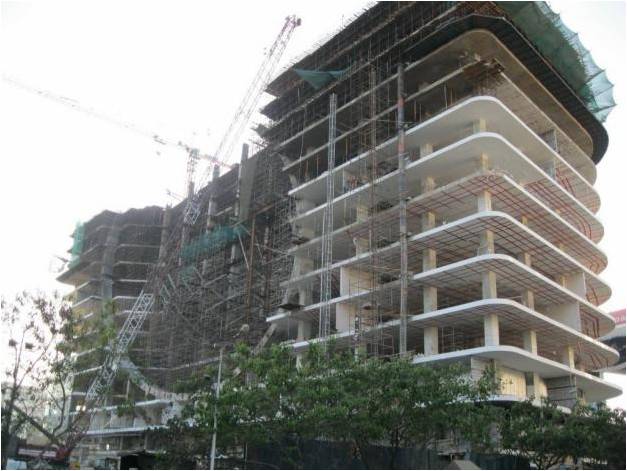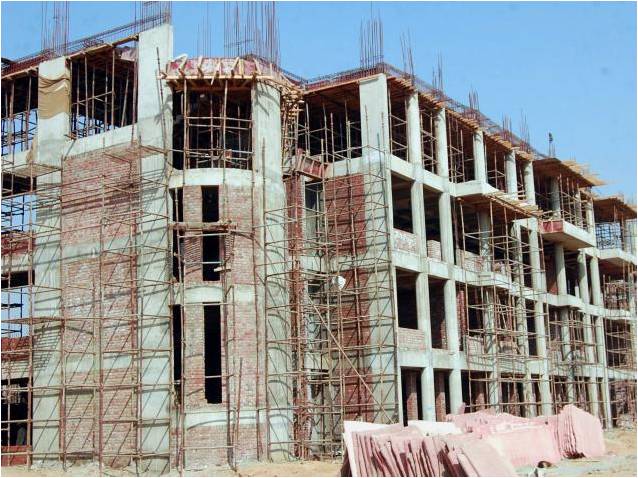 Guidelines for re-development under DCR 33(7):
Guidelines for re-development under DCR 33(7):
- Any property on which cess (tax) is charged for its repairs and maintenance by MBRRB (Mumbai Building Repairs and Reconstruction Board), is called a cess property, and is eligible for re-development.
- Consent of atleast 70% occupants required for re-development
- Proposed minimum carpet area to be given to tenant is 300 sq ft and maximum is 753 sq ft. So for eg., if a tenant has 500 sq ft, then he can get the same area that he currently has.
- Non-residential occupants would get same area as before.
- New tenancy created after 13/6/1996, is not considered for redevelopment benefits.
- Landlord or Society can re-develop the property themselves, but as it is complicated, most generally appoint a developer or at least a consultant.
- Redevelopment of societies falls under Chapter XIX of model bye-laws and GR CHS 2007/M No 554/14S dated 3/1/2009 under section 79A of MCS Act. This GR says that the Agreement with Developer must be executed within one month of the sanction of the general body.
- PITFALLS of re-development: The new members may have to bear an increased maintenance cost and also increased property taxes. Also, till the Occupation certificate (OC) and Completion Certificate (CC) are not procured, they end up paying higher BMC and water/ sewage charges.
You can find details of your property card online, for Mumbai City and for Mumbai suburbs. You will need to input your CTS number. Property card is the evidence of the ownership of the property. For rural land, this document is called 7/12.
Important factors in individual agreement of occupants:
- No interim document must be signed
- Precise details on carpet area (because developer may mention super built up area, including flower bed, niche area etc., rather than carpet area.)
- Temporary accommodation details (including who will pay for flat deposit). As per Mumbai’s Income Tax Appellate Tribunal’s order in matter of Jitendra Kumar Soneja, compensation received from re-developer as hardship caused due to re-development cannot be taxed, as it is a capital receipt. But any surplus over amount received for paying rent is taxable.
- Stringent penalty clauses for delayed delivery
- Provision for corpus fund – this can take care of maintenance and the increased property tax after re-development and re-assessment. Corpus fund must be deposited when property is vacated, so its interest can start immediately.
- Payment of higher tariff electricity bill/ water charges during part OC
- Amenities clearly specified, like parking; Mahanagar gas connection; pest control during construction; branded electrical, kitchen, furniture and plumbing fittings; window grills; type of paint/ tiles etc. to be used.
- Other amenities can be asked for, like stand-by generator; solar water heater; separate water lines for flushing and kitchen; Rain water harvesting etc.
- Forming resident’s society within specified period of 12 months or as agreed in the agreement terms
- Arbitration details, in case of a dispute.
- Sharing of gains due to extra FSI, if policy changes
- Construction quality. Hence constant watch on quality of construction must be done. If there is any discrepancy, MHADA must be notified immediately.
- Helpline number, once property is handed over to the society.
- Checking of agreement by occupant’s advocate, because once signed, there is nothing in the occupant’s hands.
If the landlord deliberately does not collect rent (to disprove tenancy), then tenant can send their cheque or postal money order, to prove their intention to pay. Also, sometimes the landlord demand money to transfer the rent receipt in case of death of tenant, as they feel their monthly outflow is more than the rent collected. The landlord has to legally transfer the name to the legal heir, but tenant must avoid spending sizable amounts in the court, and hence must try to negotiate with the landlord and get rent receipt quickly transferred to their name.
 Occupants must obtain following documents from developer:
Occupants must obtain following documents from developer:
- Performance guarantee from the developer, This may include the “Defect liability period” of 24 months, which will start after OC
- Water proofing guarantee for atleast 10 years after OC.
- Bank guarantee from the developer to the landlord, upto 20% of the price of the re-development project, including corpus fund, rent amount etc OR insist on 10% lien on the property. If the landlord himself is the developer, he may not give a bank guarantee, as it is in his interest to quickly develop the property. But you may take performance guarantees from him.
- Financial statements including latest IT returns and PAN number
- Bank solvency certificate from developer
- All relevant insurances like project insurance/ 3rd party/ labour insurance etc.
- Undertaking to submit regular progress reports, which must match original work schedule till BCC (Building completion certificate)
- Bio-data of key personnel who would be handling the project.
- Copy of license from government agencies
- Work contract sales tax number
- ESIC and PF registration details
- Occupants have to give a ‘Power of Attorney’ to the developer, for various co-ordination with the government agencies. After BCC (Building Completion Certificate), this PoA must be cancelled.
The developer submits these documents to the board:
- BMC’s latest cess category certificate
- Repair cess and Property tax bills
- BMC certificate showing upto date payment of cess.
- Conveyance deed
- Lease agreements
- Latest property card
- Index II
- Society registration certificate
- Latest true extract from cadestral survey sheet
- List of occupants as duly certified by the Executive Engineer of the local BMC ward office.
- Latest DP remarks (CRZ/ NA order etc.)
- Irrevocable written consent by individual occupants, undertaking to shift to temporary accommodation, etc.
- Plan of proposed building
- 79A Certification from Registrar of Co-operative Housing Society is required and is now part of IOD for redevelopment, as per BMC circular (P.A.406323/V.N./ general dated 15 April 2013) signed by the Municipal Commissioner.
- Affidavit cum Undertaking and Indemnity bond by developer, as per above rules
- And other documents as applicable to the scheme
Stages of development:
- NOC issued by MHADA (work has to start within 12 months from date of issue of NOC)
- Rehab of old occupants has to be completed within 30 months from issue of NOC
- Part OC (Occupation certificate) for housing old occupants
- Full OC, only after all the old occupants have been housed in reconstructed building
Other relevant information:
- Applicable FSI is 2.5 or 50% incentive over rehab FSI, whichever is greater. So developer is assured of atleast 50% FSI for free sale. Earlier there were categories of cess buildings: {Category ‘A’ – construction prior to 1/9/1940; ‘B’ – between 1940-1950; ‘C’ – after 1/1/1951}, now all clubbed together.
- 20% of incentive FSI can be used for non-residential purposes.
- Under DCR 33(9), Cluster development is possible for mix of structures with minimum plot area of 4,000 sq mt. Applicable FSI is 4 (or) required FSI plus incentive FSI of 50-75%, depending on size of the plot.
If the developer cannot use the FSI on the same plot, then he can use the balance as TDR (Transferable Development Rights), in the suburbs - If the building was earlier a cessed property and later converted to a co-operative housing society, then if unsafe, the property will get 2.5 FSI of the gross plot area OR FSI required for rehab of residents + 50% incentive FSI, whichever is more. The relevant GR is under MRTP Act TPB 4303/533/CR-63/03/UD-11 dated 19/3/2003
- Notification No. TBP 4313/123/CR-47/2013/UD-11 dated 8 October 2013, modifies DCR 33(5) for redevelopment for EWS (Economically weaker Section); MIG (Middle Income Group) and HIG (Higher Income Group with carpet area less than maximum prescribed for MIG). For the above, the total permissible FSI shall be 3.0 on the gross plot area (exclusive of fungible FSI).
Download the new MHADA re-development policy (3.42 MB). (MBRRB) Mumbai Building Repair and Reconstruction Board can be contacted at 23428331. This document is to be used as a guideline only, and is not a replacement for legal opinion.
